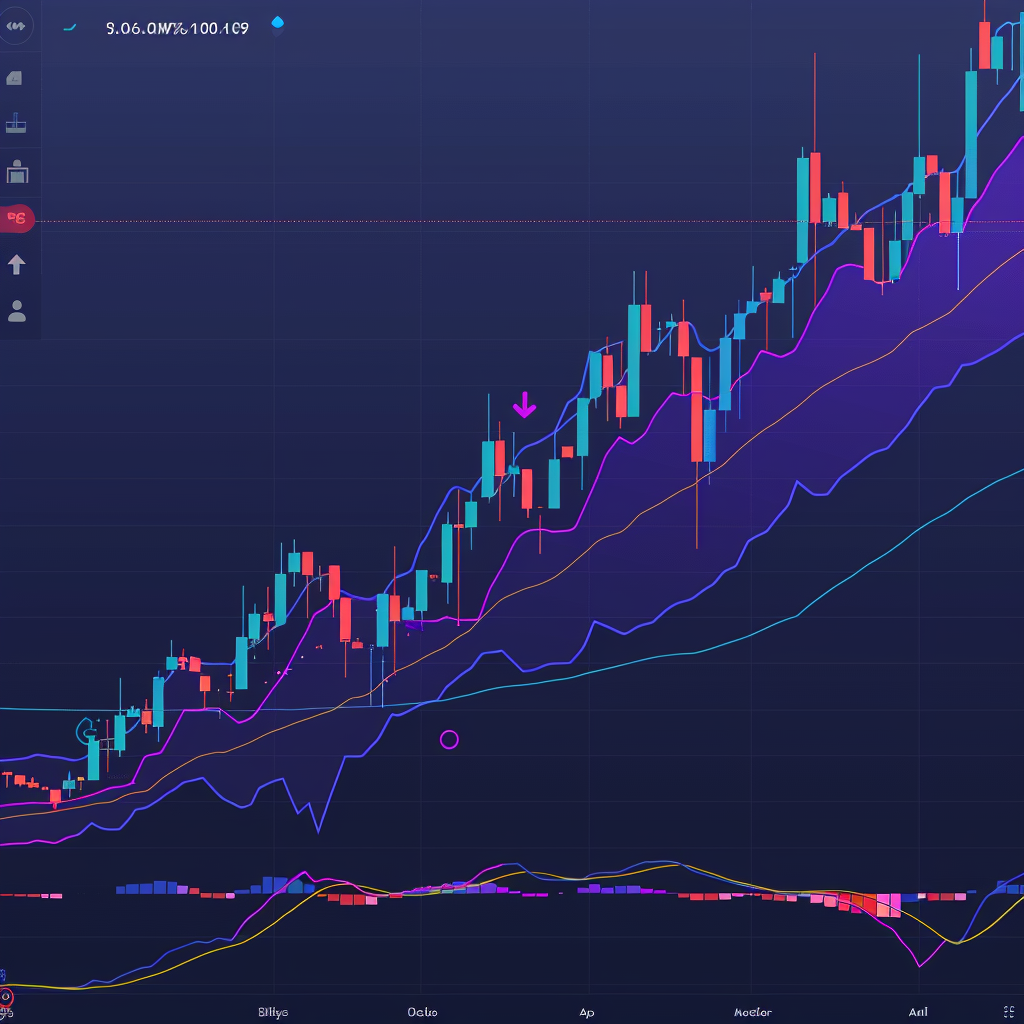Track
Good AI algorithms are built on the foundation of high-quality data. Despite the complex math involved in developing such algorithms, the true superpower behind AI is in the data.
Without accurate, reliable, and complete datasets, AI systems fall short of their potential — “Garbage in, garbage out,” as practitioners would say. Much of the magic behind AI lies in the quality of the data, which is why heavy emphasis is placed on the importance of data labeling.
In this article, we will dive deeper into:
- What data labeling is
- Why data labeling is necessary for AI
- Data labeling techniques
- The challenges of data labeling
- Data labeling best practices
Understanding Data Labeling
Data labeling is the process of identifying and tagging data samples that are typically used to train machine learning (ML) models. In other words, data labeling provides ML models with context to learn from.
For example, a labeled dataset may indicate whether an individual is eligible for a loan, what they said in an audio recording, or whether an x-ray contains a tumor.
Data labeling in AI has various uses. The more general use cases include:
- Image labeling: identifying and tagging specific details in an image.
- Text annotation: assigning labels to a text document or different elements of its content to identify the characteristics of sentences.
- Audio transcription: converting speech in an audio file into written text.
- Video annotation: labeling or tagging video clips used for training computer vision models to detect or identify objects.
Why Data Labeling is Necessary for AI
Since many of today’s most practical use cases of machine learning utilize machine learning, data labeling plays a significant role in the field of AI.
Supervised learning is a branch of machine learning that leverages labeled datasets to train models to predict outcomes and recognize patterns. Without labeled data, most supervised ML models are incapable of learning the input-to-output mappings required to make decisions and generalize to new instances.
Once a supervised learning algorithm is handed a labeled dataset, it’s ready to embark on the process of learning the underlying patterns in the data, known as model training.
If the data is not labeled correctly, the model will learn incorrect patterns. Thus, the quality of the ML model used for model training is heavily dependent on the accuracy of the ground truth label assigned during data labeling.
By accurately labeling data samples, the machine learning model is provided with a good opportunity to learn highly meaningful patterns to make better-quality predictions.
Data Labeling Techniques and Tools
One of the first decisions project leaders must make when embarking on a new AI project is how the data will be labeled. Though some nuances do exist, their decisions often fit into one of three categories.
- Manual data labeling
- Semi-automated data labeling
- Automated data labeling
Identifying which data labeling approach is most effective for the project at hand relies on one's understanding of each approach, including its pros and cons.
Manual data labeling
The standard technique for developing a training dataset is manual data labeling. This consists of leveraging subject matter expertise to examine each data point and assign it a label manually.
Manual data labeling is extremely effective in scenarios where the consequence of failure is high. For example, asking a set of doctors to hand label X-ray images to develop a model to predict whether cancer is present ensures the data is more reliable.
Pros:
- Ability to capture edge cases
- Highly skilled labelers can provide precise and consistent labels
- Better data quality assurance
Cons:
- It takes plenty of time and effort
- High costs associated with hiring professional data labelers
Note that manual labeling may also be done externally (e.g., temporary workers and contractors), referred to as crowdsourcing.
Semi-automated data labeling
Blending the strengths of automated human expertise and the efficiency of machinery is known as semi-automated data labeling.
Namely, semi-automated labeling defines the process of labeling data by leveraging machine learning to rapidly label data and then calling on human labelers to review and correct mistakes made by the algorithm.
This process significantly speeds up the data labeling while maintaining the data quality. Examples of tools that have made this possible include Labelbox and SuperAnnotate.
Pros:
- Human experts can intervene where machines fall short
- Can result in a significant reduction in cost and time in comparison to manual data labeling
Cons:
- It may result in noise, ambiguity, and inconsistency because the original labels may not have been precise, relevant, or thorough enough for the data.
- The amount of human oversight, feedback, and iteration that may be necessary can impact the data's scalability and efficiency.
Automated data labeling
Automated data labeling is when human labelers are completely out of the loop in the data labeling process. In automated data labeling, machine learning models are self-trained. This means they figure out the labeling rules from the data samples and apply them to the unlabelled instances.
Pros:
- Extremely fast processing speeds
- Cost-effective
- Consistency in labeling
- Highly scalable
Cons:
- Challenges with labeling unseen data
- One mistake in labeling can increase the probability of future errors.
Data labeling techniques compared
In the table below, we’ve compared the various data labeling techniques based on the information above:
|
Labeling Technique |
Description |
Pros |
Cons |
|
Manual Data Labeling |
Leveraging subject matter expertise to manually examine and assign labels to each data point. |
- Captures edge cases - Precise and consistent labels - Better data quality assurance |
- Time-consuming- High costs - Requires extensive human effort |
|
Semi-Automated Labeling |
Combines machine labeling with human oversight to correct errors, using tools like Labelbox and SuperAnnotate. |
- Reduces time and costs compared to manual labeling - Human experts correct machine errors |
- Potential for noise and inconsistency - Requires significant human oversight - Feedback and iteration are necessary |
|
Automated Data Labeling |
Machine learning models self-train to label data automatically, without human intervention. |
- Extremely fast - Cost-effective - Consistent labeling - Highly scalable |
- Difficulties with unseen data - One error can propagate future errors |
Challenges and Considerations in Data Labeling
The process of labeling data presents several challenges that can significantly impact the performance and reliability of AI systems.
Scaling data labeling for large datasets
Manual data labeling becomes practically infeasible as the dataset grows. This is due to the exponentially rising cost of paying data labelers and the impractical time constraints required for the task.
In such instances, automated data labeling is a necessity. Still, automated data labeling comes with its own set of challenges, such as dealing with various data types and employing a consistent labeling pattern.
Dealing with unstructured and noisy data
Data from the real world is rarely organized. It’s often filled with noise and may be missing key information. It could also be outright irrelevant. Extensive data preprocessing is required before the actual data labeling process to get the data in a usable format.

Image created by author using Midjourney
Though this adds more time to the project, it’s a necessary aspect since there are high-risk data labelers that may be misled by messy data, which is likely to result in inaccurate labels being assigned.
The main point here is that data cleaning and preprocessing are necessary parts of the data labeling pipeline, but such activities are difficult in and of themselves.
Cost implications and budget constraints
One of the most widely used methods of labeling data is manual data labeling. Though it may enable AI teams to leverage the knowledge of domain experts, catch edge cases, and provide consistent labels, it can also be a time-consuming and strenuous process.

Image created by author using Midjourney
As mentioned above, the costs associated with hiring such skilled human labelers grow as the size of the data increases. This process is not easily scalable.
Ambiguity and subjectivity
A significant obstacle in data labeling is the subjectivity and ambiguity of particular labeling jobs. Data labelers may interpret the same scene differently, leading to inconsistent annotations in image recognition tasks, for example.
This disparity may impair the labeled data's quality and introduce noise, which could compromise the AI model's robustness and accuracy.
Real-World Applications of Data Labeling
We’ve established that data labeling is pivotal in supporting machine learning models to perform effectively.
Here are a few key real-world applications to illustrate where data labeling may be deployed:
- Autonomous vehicles: Data labeling is essential for training autonomous and self-driving vehicles. Such vehicles are capable of detecting and reacting to objects, pedestrians, road signs, and other aspects on the road due to labeled data from sensors, cameras, and Lidar systems, assuring safe and dependable operation.
- Healthcare: Data labeling is crucial for several applications in the healthcare industry. Medical image labeling helps diagnose and plan treatment by recognizing tumors or abnormalities in MRIs and X-rays. Electronic health records are supported by annotated patient data, which aids in decision-making for medical professionals.
- eCommerce: Product recommendation systems in e-commerce rely heavily on data labeling. It entails comprehending consumer behavior, preferences, and product descriptions. Proper labeling enhances user engagement and boosts sales by making relevant product recommendations.
- Social media: Data labeling is the foundation for social media content moderation. Content that is deemed offensive or harmful is flagged in posts and comments. As a result, the internet is safer and easier to use.
- Financial services: Labeled transaction data is used in financial services for risk assessment and fraud detection. Data labeling protects consumers and financial institutions by assisting in the accurate assessment of risk and in identifying odd patterns of potentially fraudulent activity.
- Language translation: Text data labeling is used by language translation services to facilitate precise language translations. Machine translation models improve accuracy and efficacy through training with labeled translation datasets.
Best Practices for Data Labeling Projects
In this section, we will discuss some of the best practices to help AI teams achieve quality, consistency, and efficiency in their data labeling process.
Define clear and specific labeling guidelines
Labeling guidelines are instructions that specify how data should be labeled. For example, prior to labeling images, AI teams should specify what constitutes a sample falling into a certain category, how to handle partially or obscured images, and how to label unimportant or background objects.
With the support of precise and detailed labeling guidelines, the accuracy and reliability of the labeled data can be increased, and labeling process subjectivity and variability can be decreased.
Train and monitor labelers
Data labelers must be trained and monitored to ensure they follow labeling guidelines and produce high-quality labels. Enforcing these practices helps to ensure labelers maintain consistency and quality in their data labeling.
Training includes providing labelers with background information, examples, feedback, and support to help them understand the labeling task effectively. On the contrary, monitoring involves measuring and evaluating labelers’ performance in terms of accuracy, speed, agreement,and retention rates, and addressing any obstacles that may arise during the labeling process.
Validate and improve labels
Labeled data must be validated after the data labeling process is finished to ensure it satisfies the needs and expectations of the AI team – if it doesn’t, improve it.
Note validation entails examining the accuracy, completeness, diversity, coverage, and consistency of the labeled data, as well as the reliability and agreement of the labelers. This practice can distinguish useful from unuseful data and determine the robustness and performance of the machine learning models.
Ethical Considerations in Data Labeling
To guarantee impartial and fair procedures, it is crucial to comprehend the ethical issues surrounding data labeling.
Detecting and resolving possible biases, comprehending the impact of biased data on machine learning algorithms, and looking into ethical issues like consent, privacy, and justice are all essential steps in developing responsible and ethical data labeling practices.
Putting data ethics first when labeling data is essential to creating more fair and reliable AI systems.
Privacy
One of the ethical implications of data labeling is privacy. Care must be taken when annotating sensitive data, including names and addresses. Proper consent procedures must be in place since individuals must be able to give informed consent for the labeling and further use of their data.
Bias
When biases are introduced during the data labeling process, the integrity and fairness of labeled datasets may be jeopardized. This problem may arise due to prejudices harbored by labelers, which stem from their preconceived conceptions about the gender, ethnicity, or socioeconomic standing of individuals.
Due to the potential for these biases to distort the labeled data, discrimination and inequality are more likely to continue.
Biased data labeled without considering ethical considerations may negatively impact the performance and results of machine learning algorithms. Prejudices and discrimination prevalent in society will likely be reflected and amplified by algorithms trained on inaccurate information.
Fairness
Fair labeling is another ethical matter – this means treating everyone and every group equally. If a wide range of opinions are heard, stereotypes are contested, and novel concepts are considered, unfair labeling can be avoided or minimized.
The possible effects of labeling decisions on different communities must be carefully considered, and any prejudice or unfair treatment must be addressed.
Conclusion
Data labeling is an essential step in creating high-performing machine learning models. While it may seem straightforward from the outside, putting it into practice is a difficult challenge. Companies now have to weigh a variety of variables and techniques to decide which labeling strategy is best. A thorough evaluation of task complexity, along with the project's size, scope, and duration, is recommended because every data labeling method has advantages and disadvantages.
You can keep learning about AI and the importance of data labeling in other DataCamp resources:





